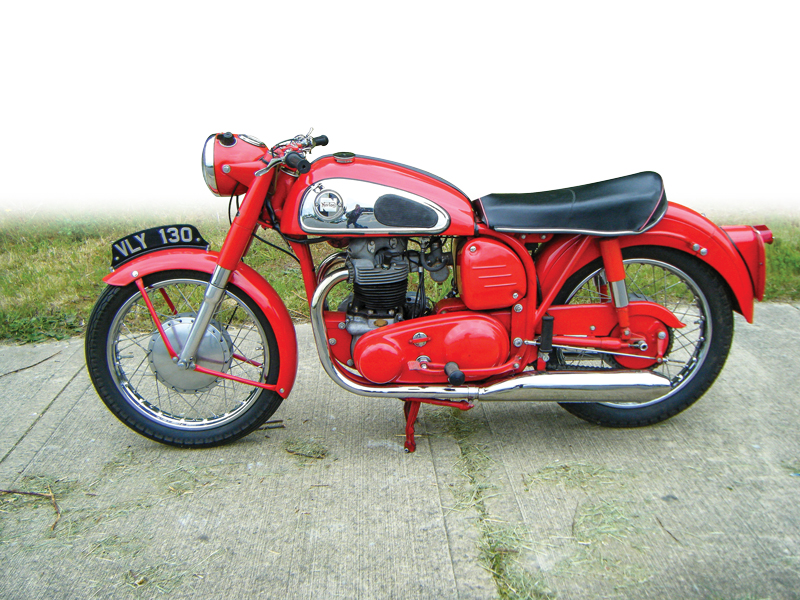
This was the bike that got a lot of Americans excited about the Norton marque. Brit bikes were relatively rare in the U.S. in the early 1950s, with mainly Triumph and BSA battling it out. Yanks had long read about Norton’s racing successes, like when a 500 Manx came in second at Daytona in 1949, but were not much interested in the single-cylinder Internationals, civilianized versions of the racing Manx. What they wanted was an easy to start twin, with enough zip to run up to the semi-magical 100 mph mark. The 500cc Dominator 88 did not quite have the punch needed, but when it was bored and stroked to 600cc (actually 597cc), that stoked some serious interest.
Some people, both industry and consumers, were a little surprised that Norton had not gone to the popular 650 size, which Triumph had done in 1950 with the Thunderbird, and BSA a year later with the Golden Flash. Nortons began to be imported in 1949, and had six U.S. distributors. After the arrival of the 99 the distributors apparently got together and jointly bought the first full-page ad seen in the bike magazines–in the November ’66 “Cycle.” After a very complimentary road test in the September issue.
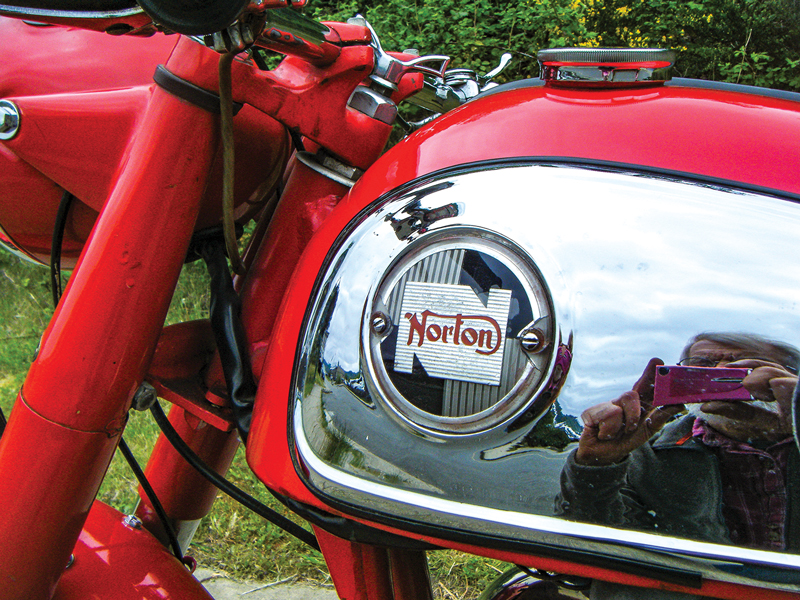 Norton was an old company, with James Lansdowne Norton founding the Norton Manufacturing Company at the age of 29, back in 1898, when it started manufacturing chains for the burgeoning bicycle market. But motorized bicycles were the coming thing, and JLN got right on it. His 690cc Peugeot-powered V-twin, a touring model, won the Isle of Man Tourist Trophy in 1907; success was clearly in the stars. Norton began building its own engines and prospered.
Norton was an old company, with James Lansdowne Norton founding the Norton Manufacturing Company at the age of 29, back in 1898, when it started manufacturing chains for the burgeoning bicycle market. But motorized bicycles were the coming thing, and JLN got right on it. His 690cc Peugeot-powered V-twin, a touring model, won the Isle of Man Tourist Trophy in 1907; success was clearly in the stars. Norton began building its own engines and prospered.
Late in 1945, after WWII, Norton went back to building civilian motorcycles, both a side valve and an OHV 500 single, along with a very few OHC 350 and 500 Internationals. Triumph was hitting the advertising pages big time, promoting its sleek T100 Tiger 500cc twin, and that was getting a lot of attention. So Norton did the logical thing and hired a designer named Bert Hopwood, who had worked at Triumph before the war when the T100 first came to light. He joined Norton in 1947, improved the singles, and then worked on developing a parallel twin. In November of 1948 the Dominator Model 7 showed up at the annual Earl’s Court motorcycle show, with a vertical twin engine mounted in a Norton frame with a telescopic fork and a plunger rear suspension. Unfortunately, at 440 pounds it was 75 pounds heavier than the Triumph. In 1949 Hopwood moved on to the BSA company, assigned to the task of making BSA’s 500 twin into a 650.
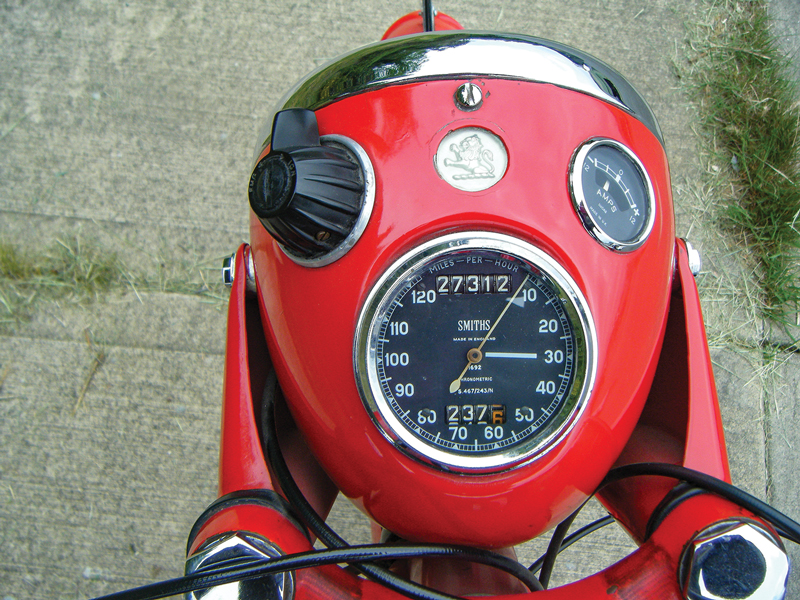 Norton went to work bringing the Dominator 7’s weight down, and the big innovation was the advent of the Featherbed frame, originally intended for the racing Manxes. Previous frames had been complicated and heavy, whereas the Featherbed was essentially two one-piece loops that was both lighter and stronger, using expensive Reynolds 531 manganese-molybdenum, mild-carbon steel tubing. Since everything passes through the steering head, the backbone tubes were welded to the bottom of the head, while the downtubes actually ran between the backbone tubes and then welded to the top of the head. All suitably braced.
Norton went to work bringing the Dominator 7’s weight down, and the big innovation was the advent of the Featherbed frame, originally intended for the racing Manxes. Previous frames had been complicated and heavy, whereas the Featherbed was essentially two one-piece loops that was both lighter and stronger, using expensive Reynolds 531 manganese-molybdenum, mild-carbon steel tubing. Since everything passes through the steering head, the backbone tubes were welded to the bottom of the head, while the downtubes actually ran between the backbone tubes and then welded to the top of the head. All suitably braced.
Norton then went about making a roadster edition of the frame, using less expensive steel. Initially the saddle-supporting rear section was bolted on, but soon was welded, as that was a lighter approach. Norton also saw fit to give the frame its own name, plus a secondary description, which began with Wideline, and then Slimline (1960), referring to the width of the frame beneath the forward part of the saddle. The 99 used an oil-damped Roadholder fork and a swingarm rear end with a pair of Girling shock absorbers. When the 500 Domi 7 twin got the Featherbed, the bike received new numeration: Domi 88.
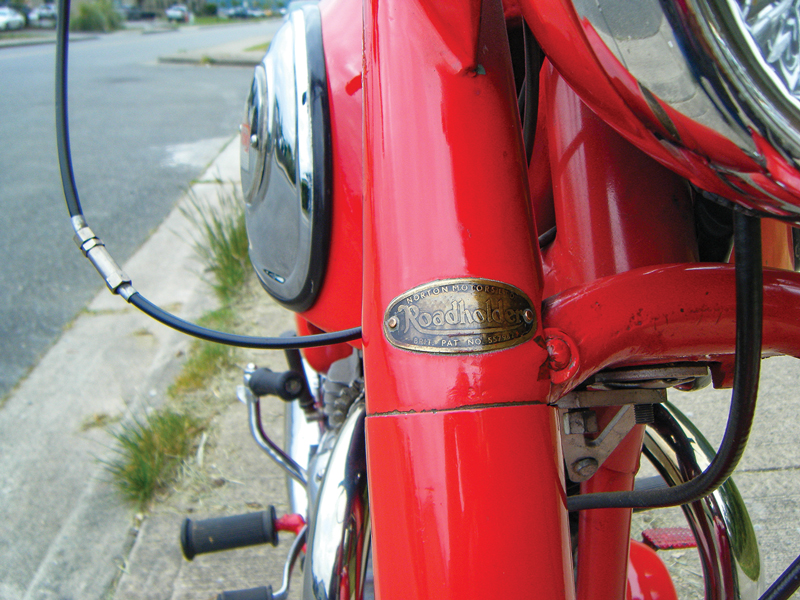 Move forward to 1955, and we find Mr. Hopwood being invited to rejoin the Norton Company. And soon the 497cc 88 had a larger sibling, the 597cc 99, the 100cc gained by using an even longer stroke…the 88 having a 66 x 72.6mm bore and stroke, the 99, 66 x 82mm.
Move forward to 1955, and we find Mr. Hopwood being invited to rejoin the Norton Company. And soon the 497cc 88 had a larger sibling, the 597cc 99, the 100cc gained by using an even longer stroke…the 88 having a 66 x 72.6mm bore and stroke, the 99, 66 x 82mm.
Nothing exceptional about the dry-sump engine. The crankcase was split vertically, the cylinders were iron, the head aluminum alloy. The camshaft was up at the front of the engine with four light-alloy pushrods operating the four valves. A single Amal Monobloc fed the fuel to the combustion chamber, having a modest compression ratio of 7.6:1.
A single-row primary chain ran in an oil bath from the crank to clutch, which had little rubber shock absorbers. This was all done inside a sheet-metal primary case. And if the cork gasket was in good shape, the oil stayed inside. The four-speed transmission was made by Norton, and in best British tradition, the shift was on the right side, up for first.
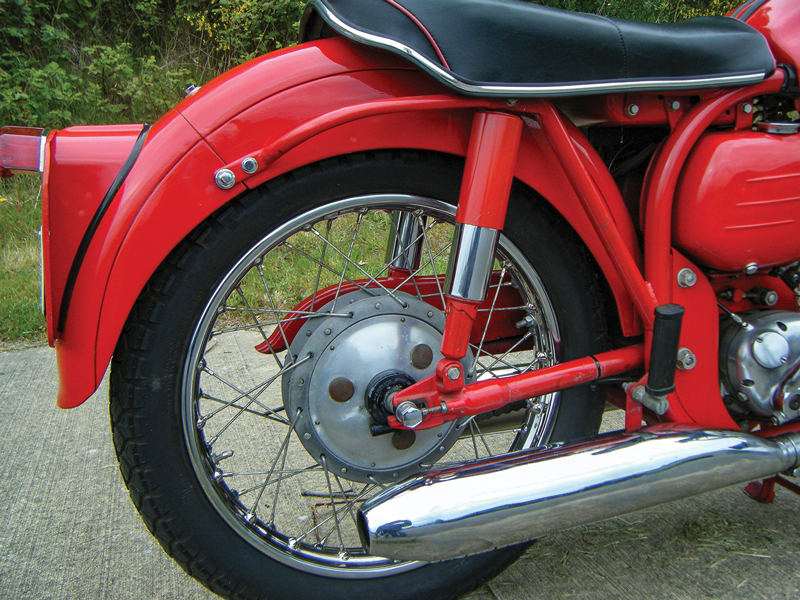 The bike weighed some 410 pounds wet, and put out 31 horsepower. It had a comfortable seat, slightly Americanized handlebars and a 4.4-gallon tank–test write-ups said the 99 got more than 50 mpg. The headlight shell held a speedometer, ammeter and light switch. Initially a Lucas magneto sparked the plugs and a dynamo lit the seven-inch headlight, but in 1958 a crankshaft-driven alternator and distributor did both tasks. Petcock on, choke if cold, tickle the carb, fold out the starter and a healthy kick or two would get the engine going.
The bike weighed some 410 pounds wet, and put out 31 horsepower. It had a comfortable seat, slightly Americanized handlebars and a 4.4-gallon tank–test write-ups said the 99 got more than 50 mpg. The headlight shell held a speedometer, ammeter and light switch. Initially a Lucas magneto sparked the plugs and a dynamo lit the seven-inch headlight, but in 1958 a crankshaft-driven alternator and distributor did both tasks. Petcock on, choke if cold, tickle the carb, fold out the starter and a healthy kick or two would get the engine going.
That “Cycle” road test reported a top speed of 114 mph–impressive. And a quarter-mile time of 14.61 seconds. Equally impressive.
The years went on. In 1961 the 99SS version appeared, with twin carbs. Last official year for the 99 and 99SS was 1962, replaced by the 650SS, now stroked to 89mm to get the additional 50cc.

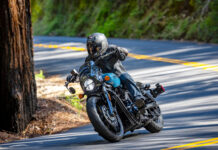






I owned this bike, VLY130, in the UK, between 1970 & 1979. I brought it for £20 needing work! During my ownership I rode it from the UK to many European rallies including five times to the Elephant Rally in Germany, in January! I am most suprised to see it again!
Ken my father, Lynn Snider bought this bike in 79 or 80, maybe from you. He changed the color to red and kept it till he died in 2004. I traded to Cliff in 2007.
Hi Ken
I’m trying to find a Ken Horwood who knew Ron Buttfield and his Jowett in the 60s. Any chance it is you?
Barry
Yes, I knew Ron Buttfield in the 1960’s.
I had a Norton 99 deluxe when I was 16 I’m now 72 it was a great bike also had a full Avon fairing red and white. I still own a couple of bikes but remember the Norton with affection.
Well in November of 1960 Norton were building the first Norton Manxman 650 for export to the USA and I own one out of 11 in the UK
There is no way a 31 BJP norton 99 would do 114 mph!! I had one 4 years. A 1957 model. I spent a fortune on tuning parts.paul dunstall the tuner from south London. The 650 ss could do the 114mph
I owned a 1960 Dominator 600 in Montreal Quebec. Bought used in 1961 for $600. Cdn. This bike had 8000 mi. on it. Two and a half years later it ha 40,000 mi. on the odo. Rode the bike to Dec. 12th one year before putting it away for the winter. The bike was absolutely reliable the whole time without a leak or breakdown. Top speed 110 on the speedo but it took a while to get there. Great cruiser and smooth compared to my friends BSA Road Rocket and another Triumph Bonneville who had all sorts of leaks and carb problems. Best bike ever and was sold for the same $600 paid after two and a half years. Did all the maintenance myself ,oil changes, plugs, points, carb needles brake shoes. Wonder what it would have been worth today?
I owned a blue 600cc 99 with an Avon streamline faring from April to September 1964. Speed maxed out at marginally in excess of the magic “Ton”. 114mph? In your dreams.
I’m lucky to have my dad’s 1958 Red Dominator 99 659CYA he bought it from the original owner back in the early 80s so I’m the 3rd owner
I own a 1961 Norton 650 Manxman USA model. I purchased the bike from the original owner. The bike is all blue with lots of chrome. The bike is 100% 0riginal except for the rubber. Has the original red seat. The bike is in remarkable condition. I have it on the bench now. I hope to get it running soon. David…Sarasota,FL.
I am the new owner of a 1961 Norton 650 Manxman serial number 95052. The bike is all original including the original exhaust silencers. Hoping to get it running soon. The bike is all blue with red seat and lots of chrome. This is an unrestored bike in remarkable condition. Sarasota, FL USA
As it turns out I recently purchased the bike from Cliff’s son after his passing. Does anyone recall what color it was originally? I’m considering doing a full restoration on her now that I know the red wasn’t original.
Darren when my dad bought it in 79 it was gray.
metalic. Also I have the UK rear plate